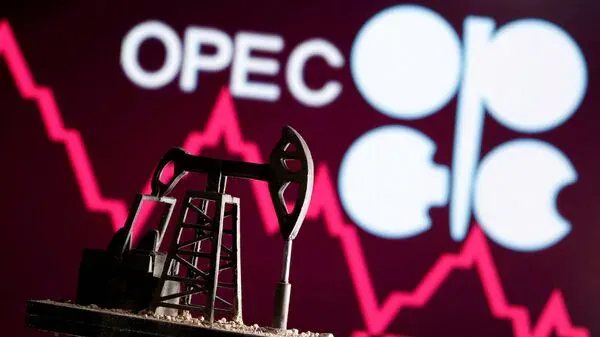An unprecedented change in the overturning circulation of the Southern Ocean since 2015—marked by a sudden rise in surface salinity and collapse of Antarctic sea ice—signals a potential tipping point in the global climate system. This shift, coupled with evidence of accelerating weakening in the Atlantic Meridional Overturning Circulation (AMOC), may mark the early stages of an earth system phase shift, though there is considerable uncertainty due to the complexity of these systems.
Drawing on the latest physical oceanography, climate modeling, and paleoclimate data, this exclusive AoT Planetary Signal Brief explores the dynamic coupling between the Southern Ocean and AMOC - and what it might mean.
We explore their feedbacks with ice sheet behavior, atmospheric teleconnections, and the carbon cycle. The evidence suggests a non-linear global reorganization of climate regulation processes might be underway—one that could irreversibly reshape Earth’s energy balance, ocean heat transport, and carbon sequestration capacity.
The second half of this analysis expands into wider socio-ecological risk scenarios, assessing the implications for biosphere integrity, geopolitical stability, food systems, and the long-term viability of complex human societies. In doing so, we situate recent developments within the broader framework of a planetary phase shift and the systemic transformation now required to avert collapse.
Subscribe for free to get the full Strategic Risk Analysis on the Southern Ocean.
For investment-grade scenarios and asset-class implications, see our premium investor bulletin. Exclusive to premium tier subscribers!
The Southern Ocean’s Abrupt Shift: A Climate Engine in Flux
The Southern Ocean, long seen as a stabilizing reservoir for heat and carbon in the global climate system, is undergoing a transformation that was both unforeseen and potentially epochal. For decades, climate models predicted continued surface freshening in the Antarctic region, driven by enhanced precipitation and glacial melt. This freshening was expected to intensify vertical stratification, insulate surface waters, and modestly expand Antarctic sea ice (Silvano et al. 2025; Lee et al. 2023). But this projection has collapsed under the weight of real-world data.
Since around 2015, satellite and in-situ observations have revealed an unexpected increase in surface salinity in large sectors of the Southern Ocean, concurrent with the largest recorded loss of Antarctic sea ice—an area roughly equivalent to Greenland’s surface area (University of Southampton 2025). This saltier state has disrupted vertical stratification, enabling warm, salty deep water to rise, thereby melting sea ice from below and establishing a dangerous convective feedback loop (Silvano et al. 2025).
The re-emergence of the Maud Rise polynya—an open ocean area in the Weddell Sea that last appeared in the 1970s—has been described by researchers as a hallmark of this overturning regime shift (Fischer 2025). The new state is no longer stratified but rather convective, allowing deep ocean heat and carbon to reach the surface. This shift implies not just regional consequences, but a global alteration of ocean-atmosphere coupling.
Dynamic Coupling with the Atlantic Meridional Overturning Circulation
The Southern Ocean shift is not an isolated anomaly—it is the return leg of the global ocean conveyor belt, intimately coupled with the Atlantic Meridional Overturning Circulation (AMOC). The AMOC, in turn, helps regulate hemispheric heat distribution, carbon storage, and tropical rainfall systems.
Models show that even under high-warming scenarios, Southern Ocean upwelling can sustain a weakened AMOC, delaying or even preventing its collapse (Baker et al. 2025). This underscores the bipolar interdependence of global overturning cells. As Antarctic upwelling strengthens—driven by intensified westerly winds and changes in buoyancy—it exerts a compensatory pressure on the North Atlantic, forcing continued sinking to balance the global circulation budget.
However, this coupling may also be a vector of destabilization. A series of teleconnections and salinity fluxes—especially from Antarctic meltwater—can disrupt AMOC stability. As shown by An et al. (2024), freshwater anomalies in the Southern Ocean can propagate northward via the Antarctic Circumpolar Current and South Atlantic gyres, eventually reaching the North Atlantic deep water formation zones. Alongside atmospheric feedbacks such as ITCZ shifts, these salinity changes may suppress North Atlantic convection and trigger a weakening or collapse of the AMOC.
Observational reconstructions reveal that since the 1970s, the upper overturning cell in the Southern Ocean has strengthened while the lower Antarctic Bottom Water formation has declined (Lee et al. 2023). These shifts are part of a global readjustment of the MOC that includes reorganization in the Atlantic and Indo-Pacific basins. In sum, changes in the Southern Ocean are reverberating across the Earth system, modulating both the strength and character of the AMOC.
Feedback Loops: Ocean Circulation, Carbon Cycle, and Ice Sheet Instability
Both the AMOC weakening and Southern Ocean shift play critical roles in sequestering atmospheric carbon. When either weakens, the ocean’s carbon sink function erodes, amplifying climate forcing in classic amplifying feedback.
In high-resolution simulations, a weakening AMOC results in less vertical mixing and reduced transport of carbon to the deep ocean, elevating atmospheric CO₂ and contributing to accelerated warming (Schaumann et al. 2025). The Southern Ocean, responsible for up to 40% of global ocean CO₂ uptake, exhibits similar behavior. Stronger upwelling, driven by poleward-shifting westerlies, brings carbon-rich deep water to the surface, where it outgasses into the atmosphere despite concurrent uptake of anthropogenic CO₂ at the surface (Menviel et al. 2023).
At the same time, ice–albedo feedbacks and glacial meltwater inputs generate complex, non-linear feedbacks. While Antarctic meltwater can freshen surface layers and reinforce stratification—potentially sequestering more carbon in the deep—it may also erode Atlantic salinity gradients and destabilize AMOC formation zones. These interactions hint at multi-directional feedbacks: ice affects circulation, circulation affects carbon cycling, and carbon cycling affects both ice and circulation. In specific regimes, these loops may reinforce one another, triggering self-amplifying climate change.
AMOC Collapse Risk: Bifurcation and Early Warnings
The Atlantic overturning circulation is widely recognized as one of Earth’s potential tipping elements. Traditionally, models projected a gradual AMOC slowdown across the 21st century, with low likelihood of collapse before 2100 (IPCC 2021). However, early-warning studies using empirical data challenge this timeline.
Boers (2021) identified critical slowing down signals—rising autocorrelation and variance in sea surface data—that suggest the AMOC has moved closer to a bifurcation point. Ditlevsen and Ditlevsen (2023), using statistical extrapolation of observed AMOC proxies, estimated that a collapse could occur as early as 2050 under high emissions.
These findings frame the AMOC as a bistable system, where freshwater forcing could push it past a saddle-node bifurcation, beyond which the strong circulation state is no longer stable. While CMIP6 model ensembles show resilience under high forcing (Baker et al. 2025), their lack of interactive ice sheet coupling and ocean mixing uncertainties may render them overstable (Ditlevsen and Ditlevsen 2023). Some emergent constraint studies even suggest overestimation of AMOC weakening due to model tuning errors (Bonan et al. 2025).
This unresolved tension between model projections and observation-based early warnings underlines the urgent need to refine our detection and modeling capabilities. The bifurcation risk may be higher than we can currently measure—and a late response could leave no room for adaptation.
Cascading Tipping Risks and Coupled System Collapse
The AMOC and Southern Ocean overturning are not isolated subsystems; they are deeply coupled within a planetary-scale circulation network. A weakening in one can trigger or accelerate tipping in the other. An AMOC slowdown, by cooling the North Atlantic and warming the Southern Hemisphere (via the bipolar seesaw), could enhance Antarctic ice shelf melt, further weakening Southern Ocean stratification and increasing deep upwelling. Conversely, rapid Antarctic melt could freshen the North Atlantic, increasing the likelihood of AMOC disruption (An et al. 2024).
This kind of tipping cascade, in which one subsystem’s transition increases the vulnerability of others, is now central to climate risk frameworks (Wunderling et al. 2024). For instance, Rosser et al. (2024) show that inclusion of polar ice sheets in tipping models doubles the expected number of elements activated at 1.5 °C warming, confirming that polar processes act as systemic amplifiers. These dynamics threaten to initiate a nonlinear reconfiguration of Earth’s entire climate system—one in which known feedbacks interact in ways that are not yet fully captured in existing climate models.
Signs of a Global Climate Phase Shift
The upheaval in polar ocean dynamics is not a discrete anomaly but a harbinger of systemic transformation. When two of Earth’s most powerful thermal regulators—the Southern Ocean and AMOC—show potential signs of flipping into new states, it suggests that the planetary thermostat itself is breaking down. These signals must be interpreted not merely through the lens of linear climate trends, but as indicators of phase transition dynamics in the Earth system. To be sure, there is no evidence yet to confirm that these systems have flipped – but they are increasingly moving outside of their range of normal operation, which could indicate the onset of regime shifts.
The concept of an earth system phase shift posits that the Earth can abruptly transition from one quasi-stable climatic state to another due to internal feedback loops once key thresholds are breached. Unlike smooth, gradual change, phase shifts entail nonlinear escalation, where system behavior becomes increasingly volatile, self-reinforcing, and difficult to reverse (Steffen et al. 2018).
Such shifts have occurred in deep Earth history—most famously during Dansgaard–Oeschger events and the Younger Dryas, when AMOC collapses triggered abrupt hemispheric climate reversals of up to 10–15 °C within a decade (Ditlevsen & Ditlevsen 2023). Today, we are witnessing a similar pattern of systemic destabilization: rising autocorrelation in climate metrics, abrupt anomalies like the Southern Ocean salinity spike, and overlapping disruptions across ice, ocean, and atmospheric systems.
The question is no longer whether these feedbacks are occurring—they are—but whether they will cascade across subsystems into an irreversible shift. The latest observational and modeling evidence suggests that Earth may be approaching a collective tipping threshold—potentially even before global temperatures surpass 2 °C (Carrington 2022b; Armstrong McKay et al. 2022).
Subscribe for free to get the full Strategic Risk Analysis on the Southern Ocean.
For investment-grade scenarios and asset-class implications, see our premium investor bulletin. Exclusive to premium tier subscribers!
Regional and Global Risks: Toward a Dangerous New State
The potential collapse of the AMOC and disruption of the Southern Ocean overturning are not abstract events. They have concrete, cascading implications for regional climates, biophysical systems, and socio-political stability:
- Northern Europe: Paradoxically, an AMOC collapse would plunge parts of Europe into deep cold even as the planet warms. Winter temperatures in cities like London or Oslo could plummet to –20 °C or lower (Keating 2025). Cold extremes and snowstorms would surge, straining infrastructure and food systems accustomed to milder winters.
- Tropical Rainfall & Monsoons: The tropical rain belt would shift or contract, weakening monsoon systems vital to agriculture across India, West Africa, and South America. Billions depend on these monsoons for food. Their disruption could trigger recurrent crop failures and spark geopolitical instability across the Global South.
- North American Coasts: A collapsing AMOC would cause sea levels to spike along the U.S. eastern seaboard—not due to added meltwater, but because the weakening currents no longer siphon water away from the coast. Cities like New York and Miami would face elevated storm surge and chronic flooding.
- Amazon Rainforest: The collapse of the AMOC could reduce moisture import into the Amazon Basin, accelerating a dieback tipping point that transforms rainforest into savanna. This would release vast carbon stores, further warming the planet in a self-reinforcing loop.
- Southern Hemisphere Extremes: As the AMOC falters, heat redistributes southward. The Southern Ocean would warm, potentially destabilizing Antarctic ice shelves from below—further intensifying freshwater input and reinforcing the tipping loop (An et al. 2024; Fischer 2025).
These effects are not projections for a distant future. Due to the huge uncertainties in the models, we cannot rule out that some could begin unfolding as early as the 2030s and intensify by 2050 if emissions remain high. What we are witnessing is the emergence of a dangerous new state of the climate system—a regime characterized by runaway feedbacks, regional climate divergence, and rapid ecological degradation.
Societal Tipping Points and the Risk of Systemic Collapse
Climate tipping elements are not just environmental phenomena—they pose existential risks to human civilization. As outlined by Kemp et al. (2022), cascading climate risks could catalyze a chain of systemic failures involving food security, infrastructure, migration, and conflict.
- Food Systems: A combination of droughts, monsoon failures, and heatwaves could decimate global harvests. Crop modeling suggests yields for maize and wheat may fall precipitously under warming scenarios, while compounded events (e.g. drought and flood in the same season) become more frequent. Global food prices would spike, triggering unrest in vulnerable nations.
- Migration and Conflict: Regional collapses of agriculture or habitability could force hundreds of millions to migrate by 2050. Destinations ill-equipped to absorb such flows may experience political instability or securitized responses. Already, climate stress has been implicated in conflicts such as the Syrian civil war. A tipping cascade would multiply such risks (Kemp et al. 2022).
- Public Health and Pandemics: Climate-driven habitat disruption increases the risk of zoonotic spillovers. Simultaneous disasters—e.g. a heatwave and disease outbreak—could paralyze healthcare systems, particularly in fragile states.
- Economic and Political Fragility: Compound shocks could overwhelm financial systems, particularly insurance and credit markets. Countries reliant on food imports or climate-sensitive exports (like tourism or agriculture) would face fiscal collapse. Even stable democracies could witness political backsliding under continuous emergency conditions.
This is not a single global "collapse event" but rather a multi-scalar, multi-phase fragmentation: urban infrastructure failure here, state collapse there, financial crisis elsewhere. The global system as a whole could unravel as interdependent subsystems fall like dominoes. As Kemp et al. warn, this “climate endgame” is underexplored not because it is implausible, but because its implications are difficult to politically or emotionally digest.
2050: Tipping Point or Turning Point?
The mid-21st century—particularly the decade spanning 2040 to 2050—now looms as a pivotal horizon. By then:
- The AMOC may have collapsed or be in terminal decline (Ditlevsen & Ditlevsen 2023)
- Antarctic ice loss may have become self-sustaining
- Arctic summers may be ice-free
- The Amazon may have passed a vegetation tipping threshold
- Climate-linked migration could reach the hundreds of millions
Whether this decade is remembered as the climax of planetary destabilization—or as the turning point toward systemic renewal—depends not on inevitability, but on decisions made today.
There is still agency. Every fraction of a degree of avoided warming makes a difference. Every year of accelerated emissions reduction delays or prevents thresholds from being crossed. And every investment in adaptive infrastructure, just transitions, and biospheric regeneration buys time and resilience.
But incrementalism is insufficient. What the planetary signals demand is transformation at civilizational scale—a wholesale reimagining of energy, economy, and political systems to align with the stability boundaries of the Earth system. This means:
- Rapid decarbonization to net-zero by the 2040s
- Carbon drawdown through rewilding, regenerative agriculture, and safe geoengineering
- Governance systems oriented around planetary stewardship, not extractive growth
Subscribe for free to get the full Strategic Risk Analysis on the Southern Ocean.
For investment-grade scenarios and asset-class implications, see our premium investor bulletin. Exclusive to premium tier subscribers!
Conclusion: The Age of Transformation Is Now
The shift in the Southern Ocean and weakening of the AMOC are not just climatological events—they are early signals of a deeper phase shift in the Earth system and a civilizational test of foresight. They mark the dismantling of the Holocene stability upon which all human flourishing to date has depended.
We now stand at a crossroads between collapse and intentional transformation. The former entails a chaotic unraveling driven by reinforcing feedbacks and political inertia. The latter offers a pathway to a more just, resilient, and regenerative planetary future—though it demands profound courage, innovation, and cooperation.
As the warnings multiply—through sea ice, ocean heat, and hydrological shifts—we must recognize them for what they are: not distant threats, but present inflection points. To navigate this turbulence, we must move beyond isolated climate policies toward a planetary intelligence that integrates ecological limits with human values.
The Age of Transformation is not optional—it has already begun. The question is whether we shape it consciously, or are shaped by its consequences.






